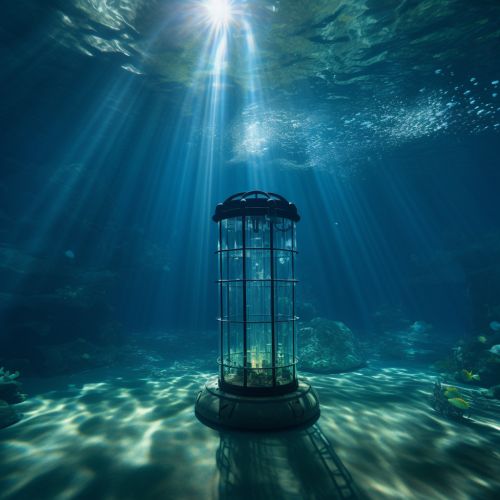The Physics of Neutrino Detectors and Neutrino Astronomy
Introduction
Neutrino detectors are a specialized type of particle detector that are designed to detect elusive subatomic particles known as neutrinos. These detectors play a crucial role in the field of neutrino astronomy, a branch of astronomy that observes astronomical objects with neutrino detectors in place of traditional optical telescopes. This article delves into the physics behind neutrino detectors and the principles of neutrino astronomy.


Neutrinos: An Overview
Neutrinos are one of the fundamental particles which make up the universe. They are also one of the least understood. Neutrinos are similar to the more familiar electrons, with one crucial difference: neutrinos do not carry electric charge. This means that they are not affected by the electromagnetic forces that affect electrons. Neutrinos are affected only by a "weak" sub-atomic force of much shorter range than electromagnetism, and are therefore able to pass through great distances in matter without being affected by it.
Neutrino Detectors: Principles and Operation
Neutrino detectors are designed to catch these elusive particles and measure their properties. The main challenge in detecting neutrinos is their weak interaction with matter. A neutrino can pass through a light year (about six trillion miles) of lead without interacting with it. Therefore, neutrino detectors must be extremely sensitive and are often very large to increase the probability of a neutrino interaction.
The operation of a neutrino detector relies on the principle of weak interaction. When a neutrino interacts with a particle of matter, it can produce a charged particle that can then be detected. The most common method of detection is through the use of a large volume of a transparent material, such as water or ice, surrounded by photodetectors that can detect the light produced when a neutrino interacts with a particle in the material.
Types of Neutrino Detectors
There are several types of neutrino detectors, each with its own strengths and weaknesses. These include:
Water Cherenkov Detectors
Water Cherenkov detectors, such as the Super-Kamiokande detector in Japan, use large volumes of water surrounded by photodetectors. When a neutrino interacts with a particle in the water, it produces a flash of light known as Cherenkov radiation, which is then detected by the photodetectors.
IceCube Neutrino Observatory
The IceCube detector at the South Pole uses a cubic kilometer of Antarctic ice as its detection medium. Like water Cherenkov detectors, it detects the Cherenkov radiation produced when a neutrino interacts with a particle in the ice.
Radiochemical Detectors
Radiochemical detectors, such as the GALLEX and SAGE experiments, use a chemical reaction triggered by a neutrino interaction to detect neutrinos. These detectors are less common than Cherenkov detectors due to their complexity and the difficulty of extracting the signal.
Neutrino Astronomy
Neutrino astronomy is a branch of astronomy that uses neutrinos to observe the universe. Unlike light or other forms of electromagnetic radiation, neutrinos can pass through almost anything, which makes them ideal for observing phenomena that are difficult to see with traditional telescopes.
Neutrino astronomy has provided unique insights into a variety of astronomical phenomena. For example, the detection of neutrinos from the sun has helped scientists understand the nuclear reactions that power the sun. Neutrinos from supernovae have provided information about the processes that occur during these powerful explosions.
Future of Neutrino Detectors and Neutrino Astronomy
The field of neutrino detection and astronomy is still in its infancy, with many exciting developments on the horizon. Future neutrino detectors, such as the proposed Hyper-Kamiokande in Japan and the DUNE in the United States, will be even larger and more sensitive than current detectors, allowing for the detection of neutrinos from even more distant and faint sources.
Neutrino astronomy also has a bright future. As our understanding of neutrinos improves, we will be able to use them to probe the universe in ways that are currently impossible with other methods. Neutrinos could provide a new way to observe the early universe, probe the interiors of stars, and even test the fundamental laws of physics.
